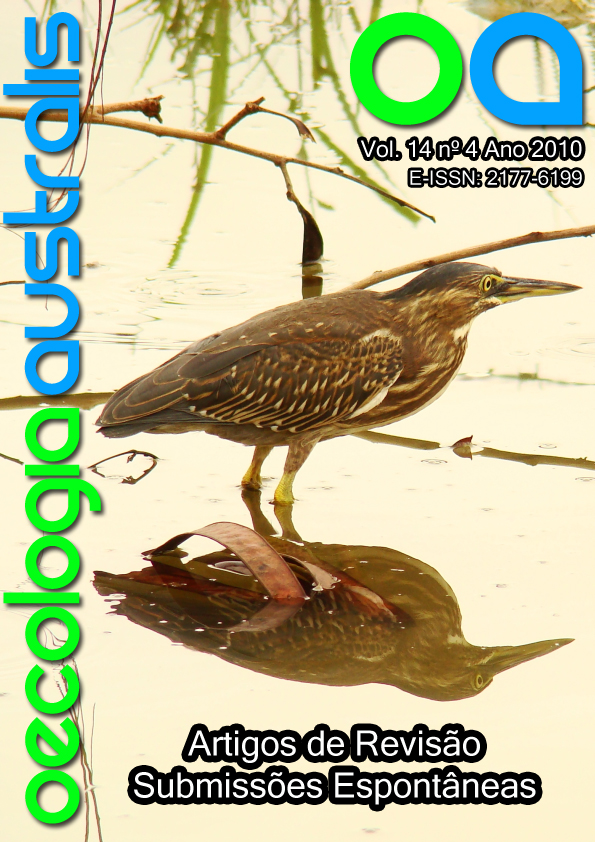SYMBIOSIS STABILITY, PATHOGENS AND REEF-BUILDING CORALS' HEALTH: INSIGHTS ON THE ECOLOGY OF THE HUMAN BODY
Keywords:
Human Microbiota, Scleractinia, Symbiodinium, simbiont, pathogenAbstract
In search of insights for general rules about the host-symbiont-pathogen interacion, a review on the ecology of the interaction between hermatypic corals (Cnidaria: Scleractinia) and their symbiotic zooxanthellae (photosynthetic dinoflagellates, Symbiodinium) is done. In the last three decades a global decline on coral reef barriers has been observed and this has been atributed to, among other causes, two processes that directly interferes in the coral-zooxanthellae interaction: 'coral bleaching' and epidemics. Bleaching events are characterized by a sudden loss of zooxanthellae, commonly leading to mass mortality on coral colonies. Although it is not possible to establish causal relations, the intensities of epidemics and bleaching events are correlated, indicating that the symbiosis is a protective factor on coral's health. Some of the insights for human epidemiology are: the recurrent evoltuion of pathogens and the interference of symbionts on the host-pathogen interaction, either by direct competition exclusion or by an indirect effect on host's enegy budget.


